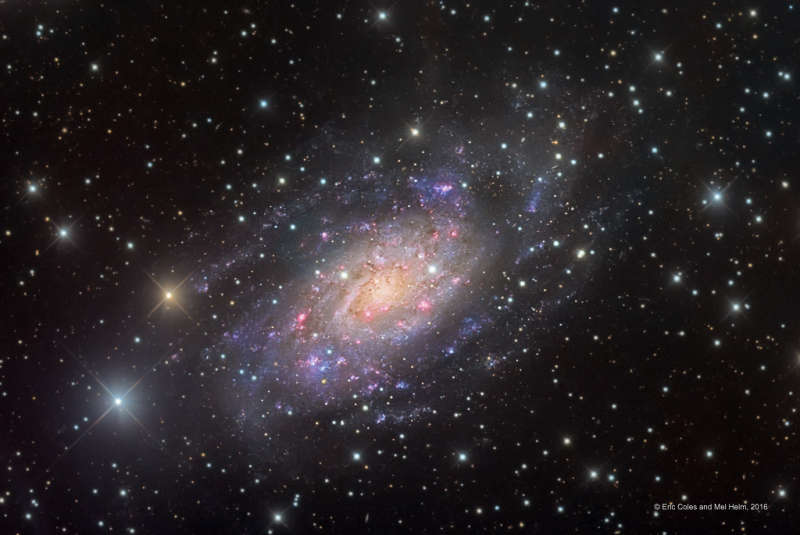Credit & Copyright: Eric Coles and
Mel Helm
Explanation:
Magnificent island universe
NGC 2403
stands within the boundaries of the long-necked constellation
Camelopardalis.
Some 10 million light-years distant and about 50,000 light-years
across, the spiral galaxy also seems to have more
than its fair share of giant star forming
HII regions,
marked by the telltale reddish glow of atomic hydrogen gas.
The giant HII regions are energized by clusters of hot, massive stars
that explode as
bright supernovae
at the end of their short and furious lives.
A member of the M81 group of galaxies,
NGC 2403 closely resembles another galaxy with an
abundance of star forming regions that lies
within our own local galaxy group,
M33 the Triangulum Galaxy.
Spiky in appearance,
bright stars in this colorful galaxy
portrait of NGC 2403
are in the foreground, within our own Milky Way.
1999 2000 2001 2002 2003 2004 2005 2006 2007 2008 2009 2010 2011 2012 2013 2014 2015 2016 2017 2018 2019 2020 2021 2022 2023 2024 2025 |
Январь Февраль Март Апрель Май Июнь Июль Август Сентябрь Октябрь Ноябрь Декабрь |
NASA Web Site Statements, Warnings, and Disclaimers
NASA Official: Jay Norris. Specific rights apply.
A service of: LHEA at NASA / GSFC
& Michigan Tech. U.
|
Публикации с ключевыми словами:
Camelopardalis - star formation - Жираф - звездообразование - спиральная галактика
Публикации со словами: Camelopardalis - star formation - Жираф - звездообразование - спиральная галактика | |
См. также:
Все публикации на ту же тему >> | |
